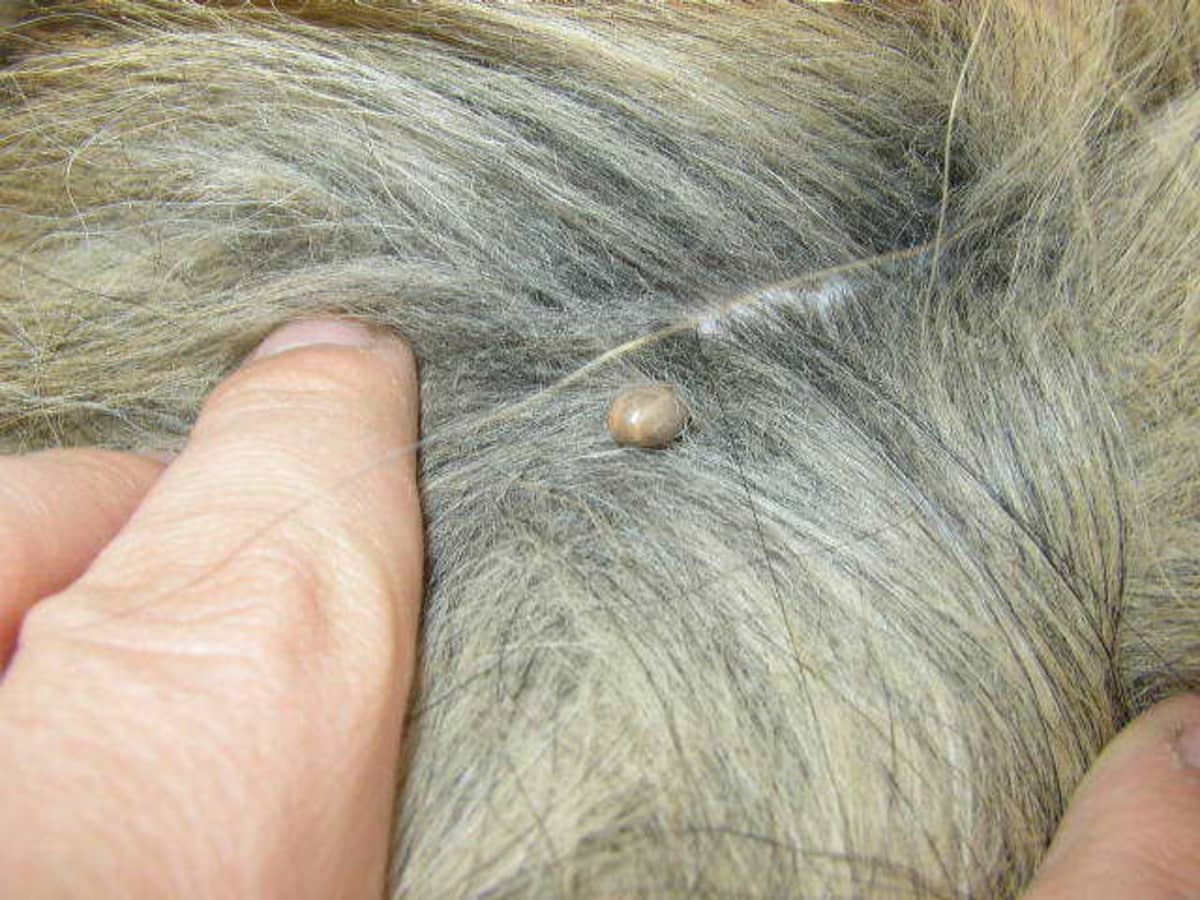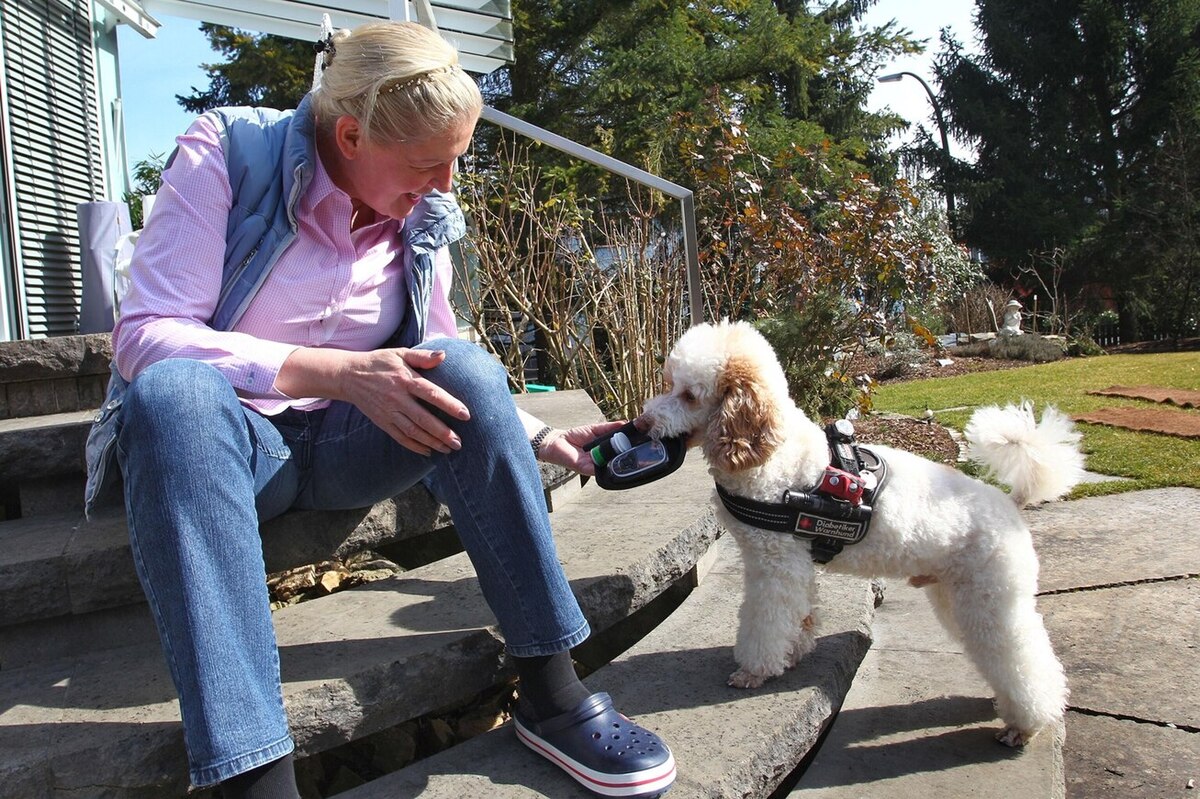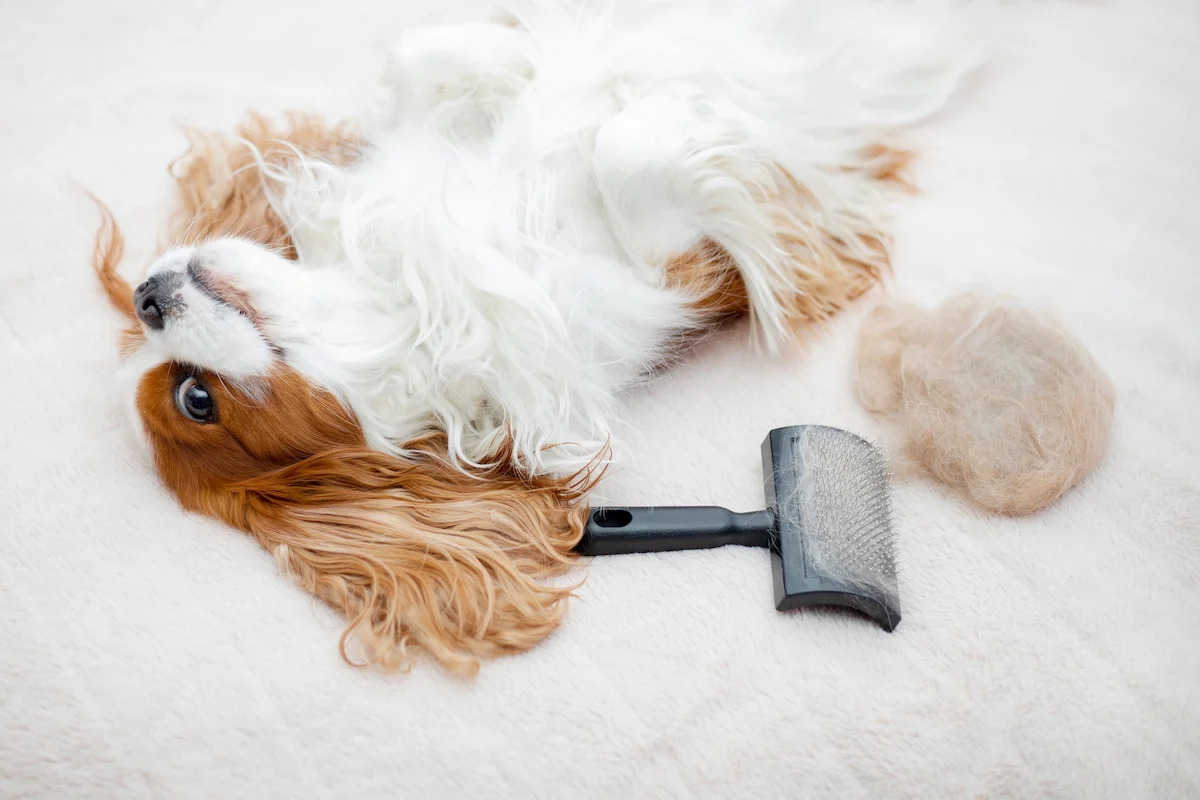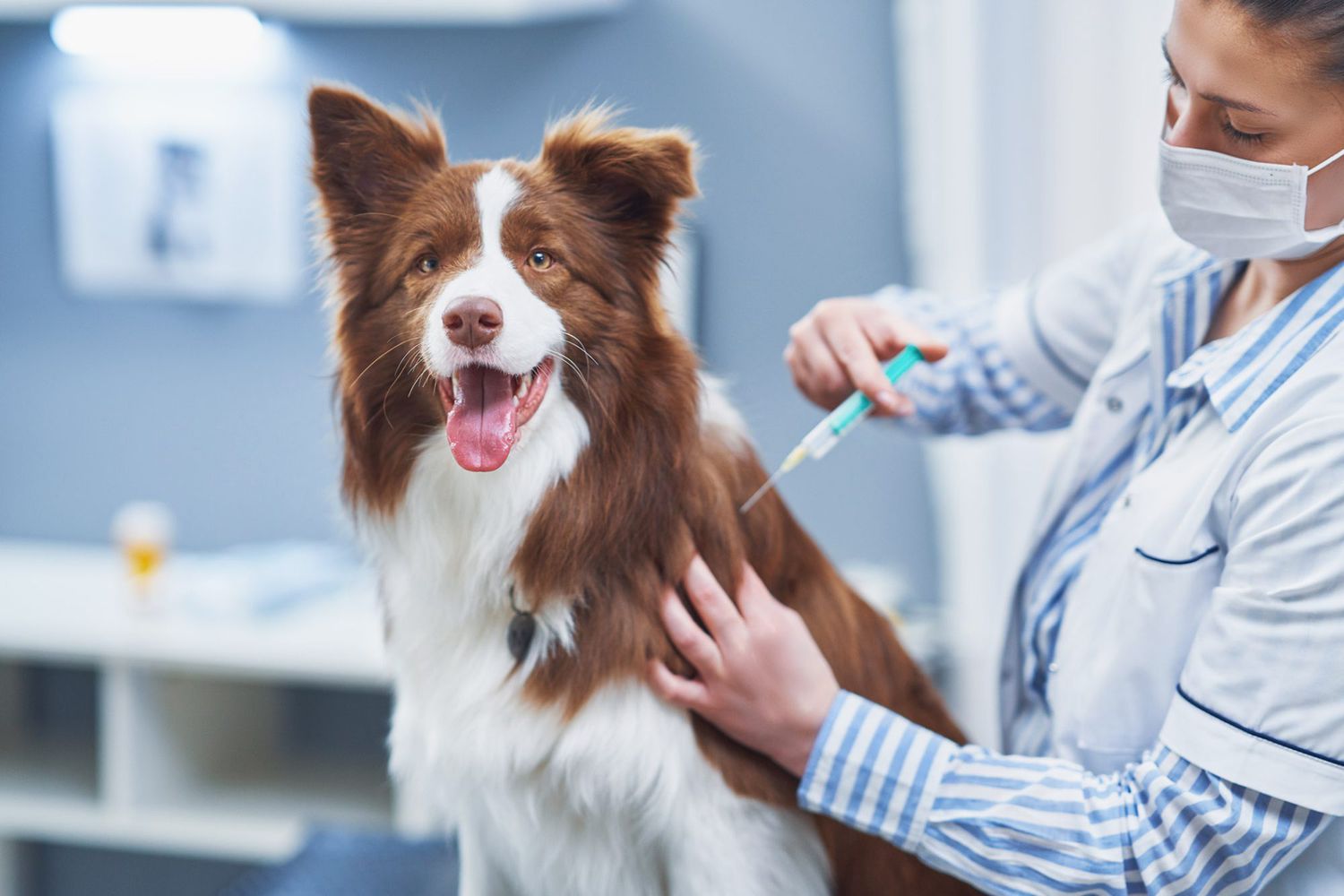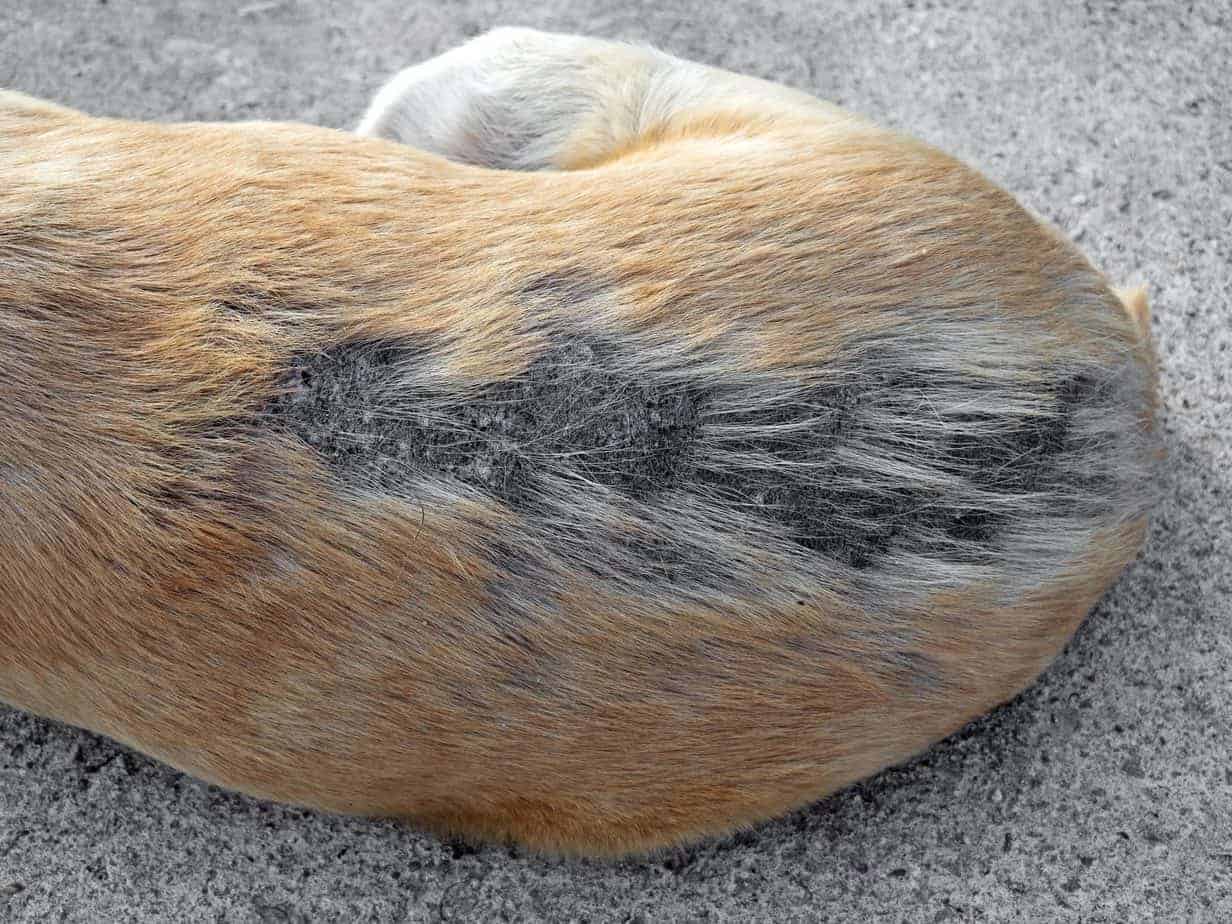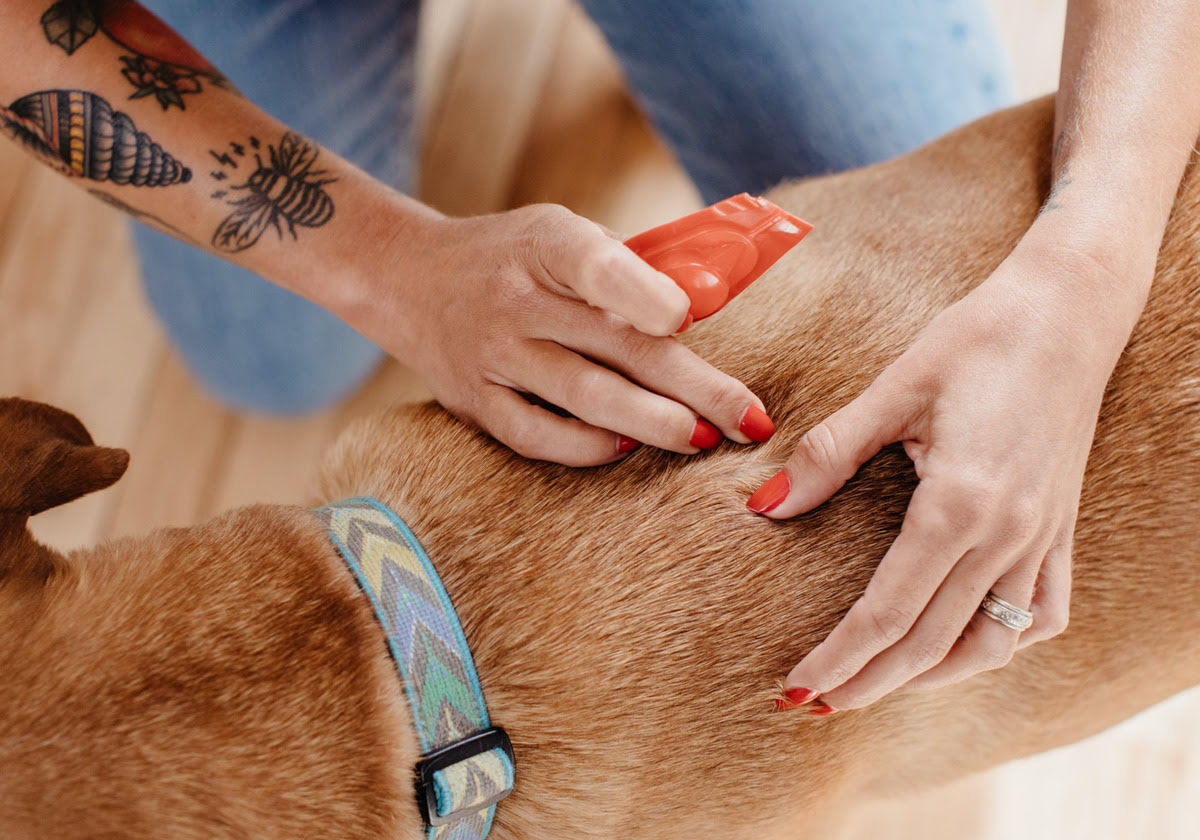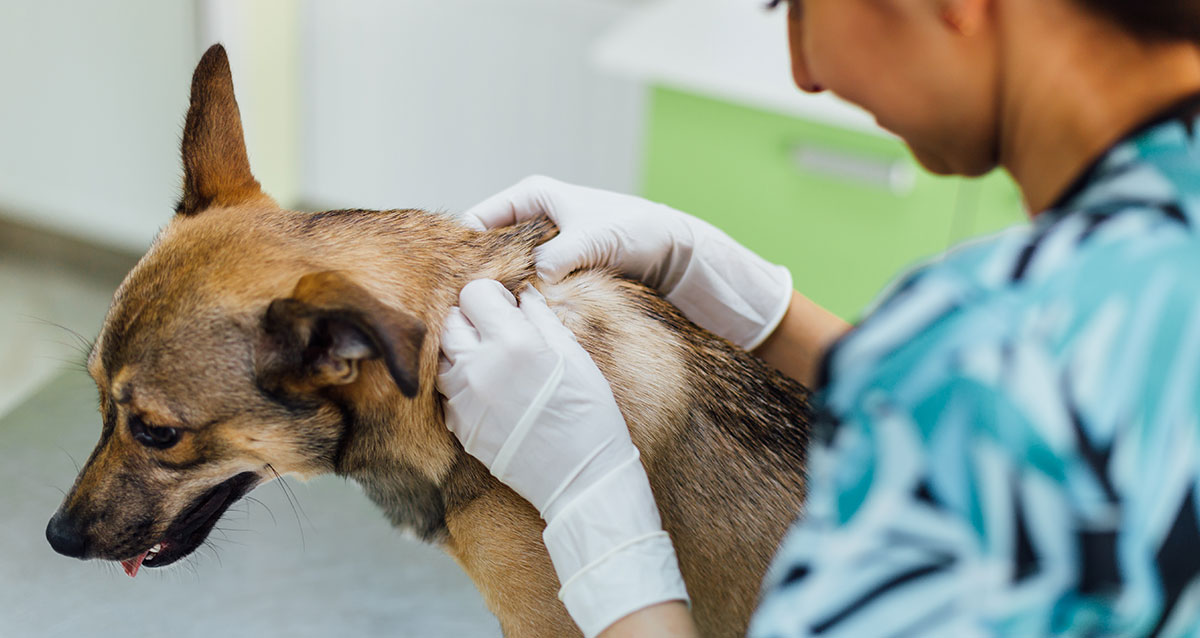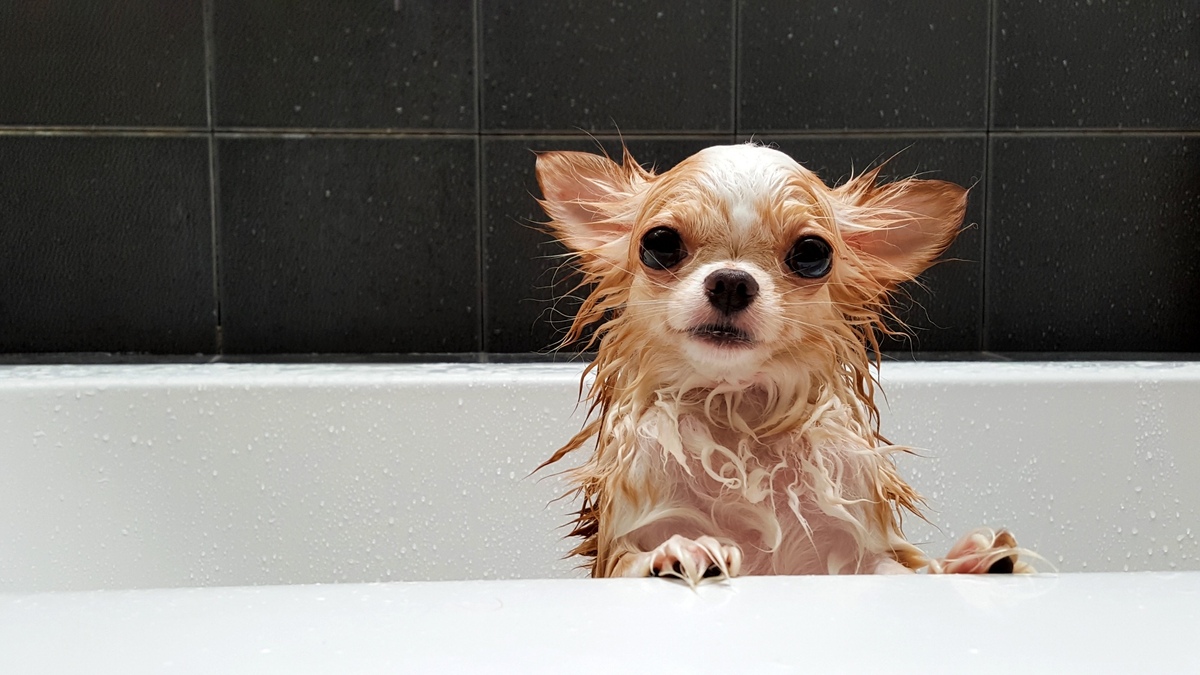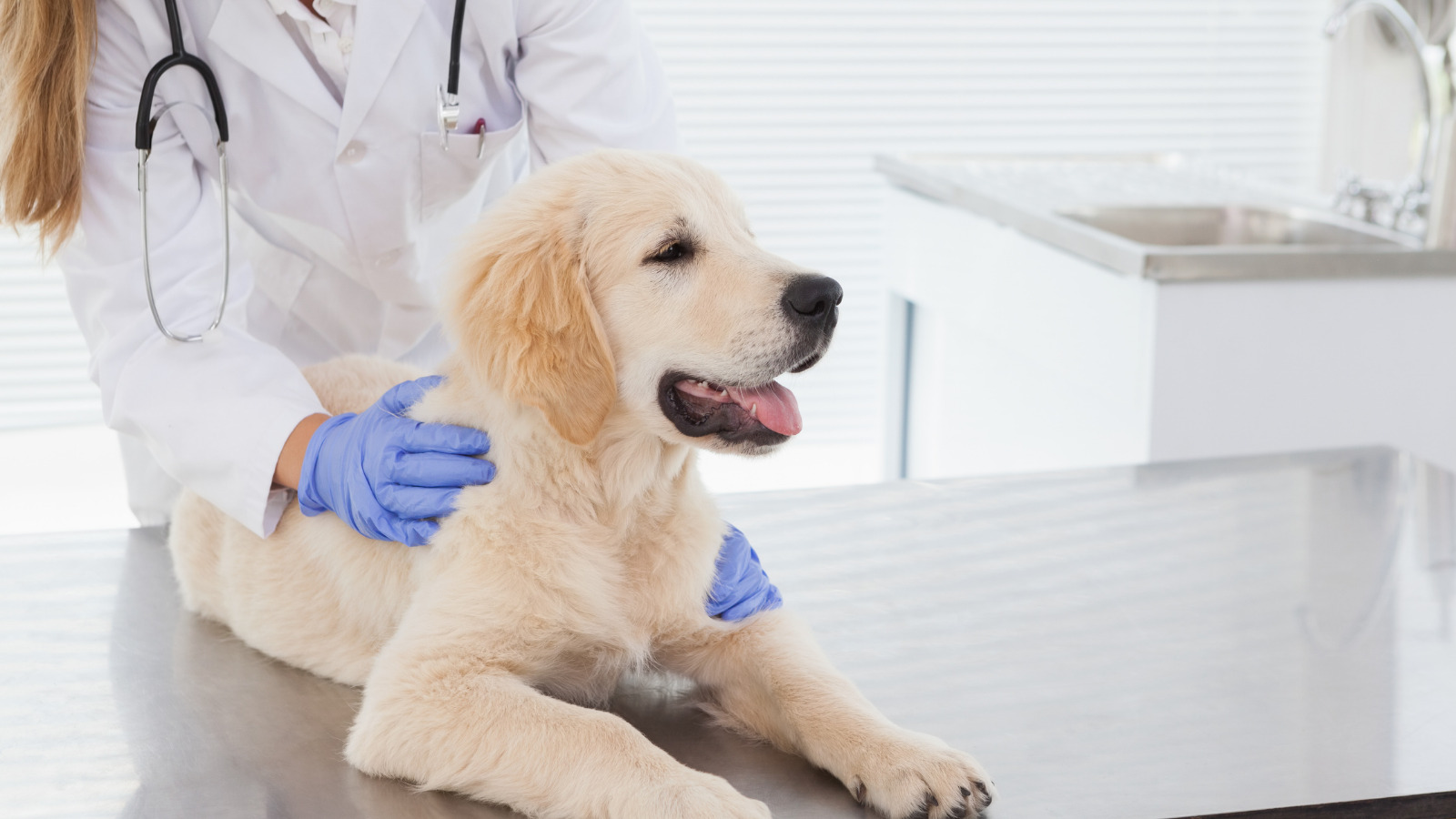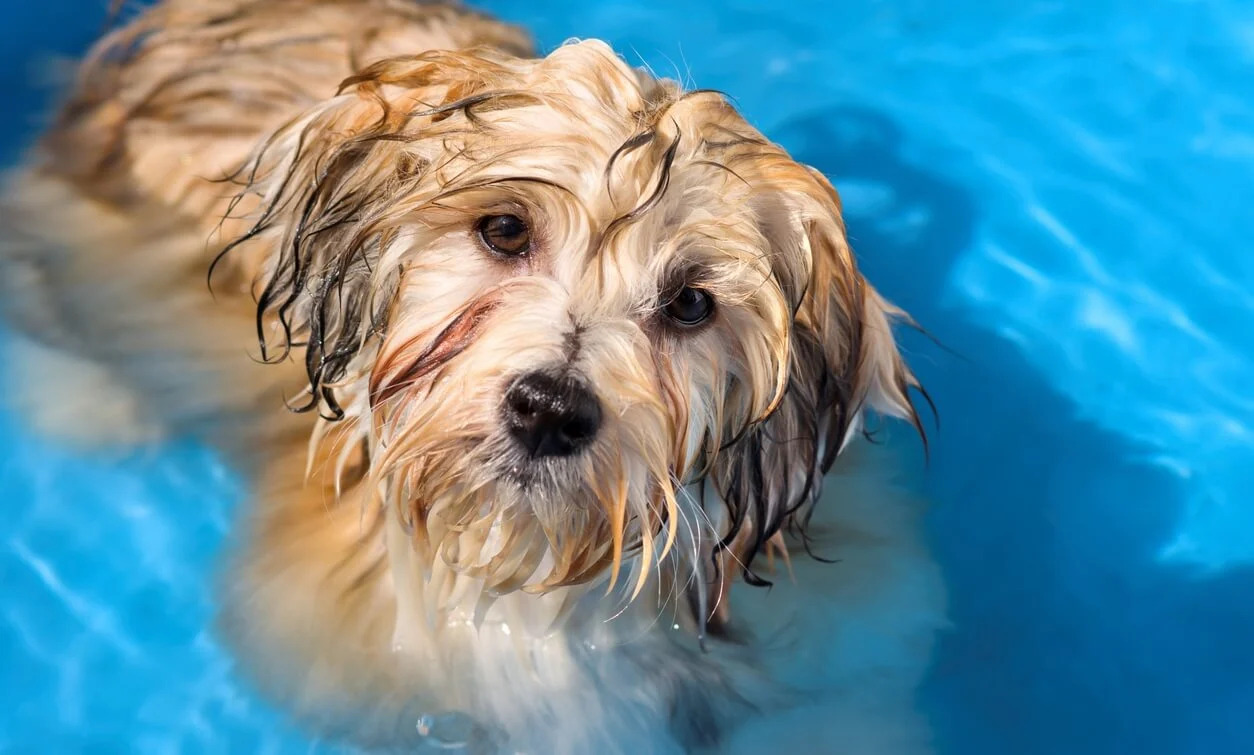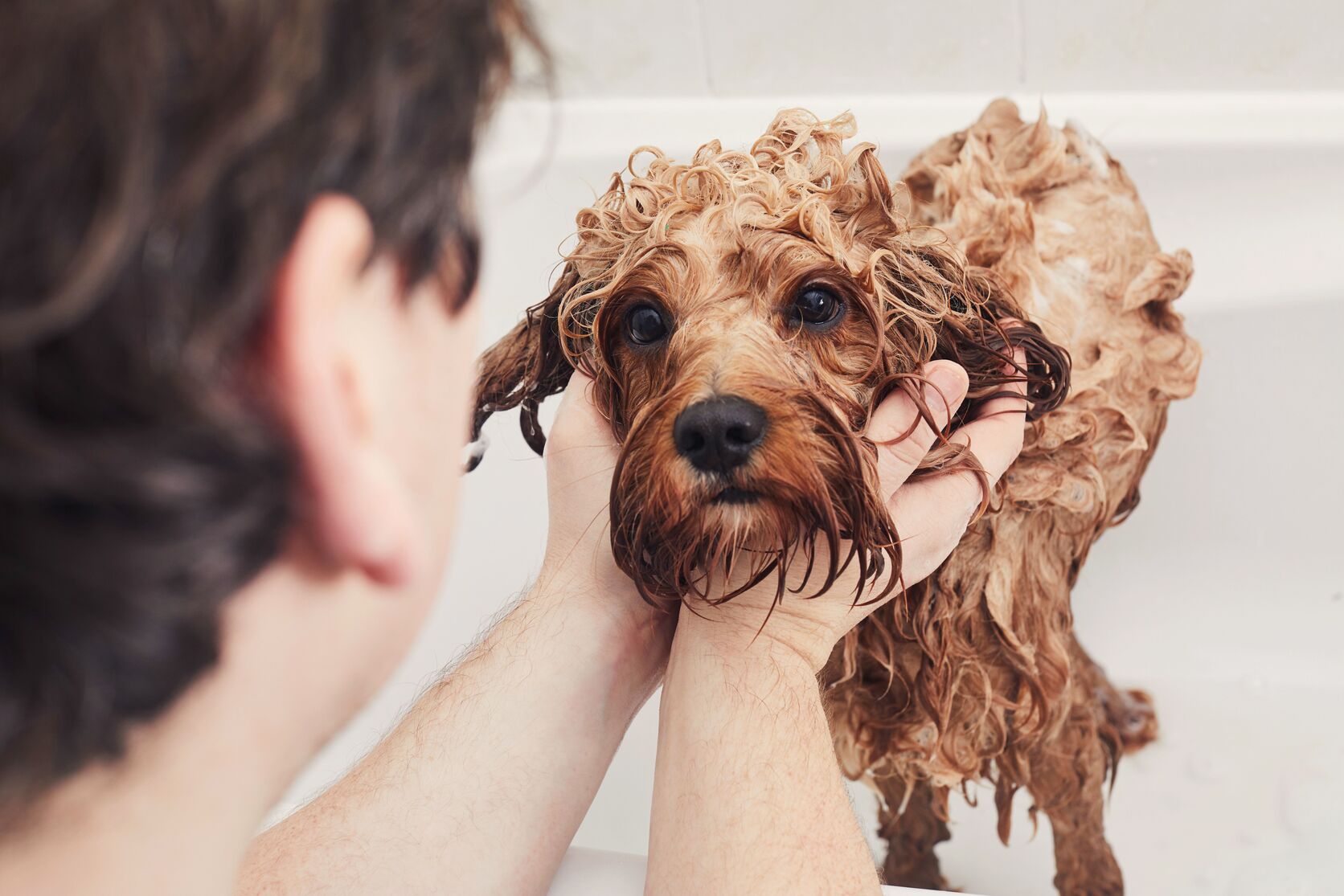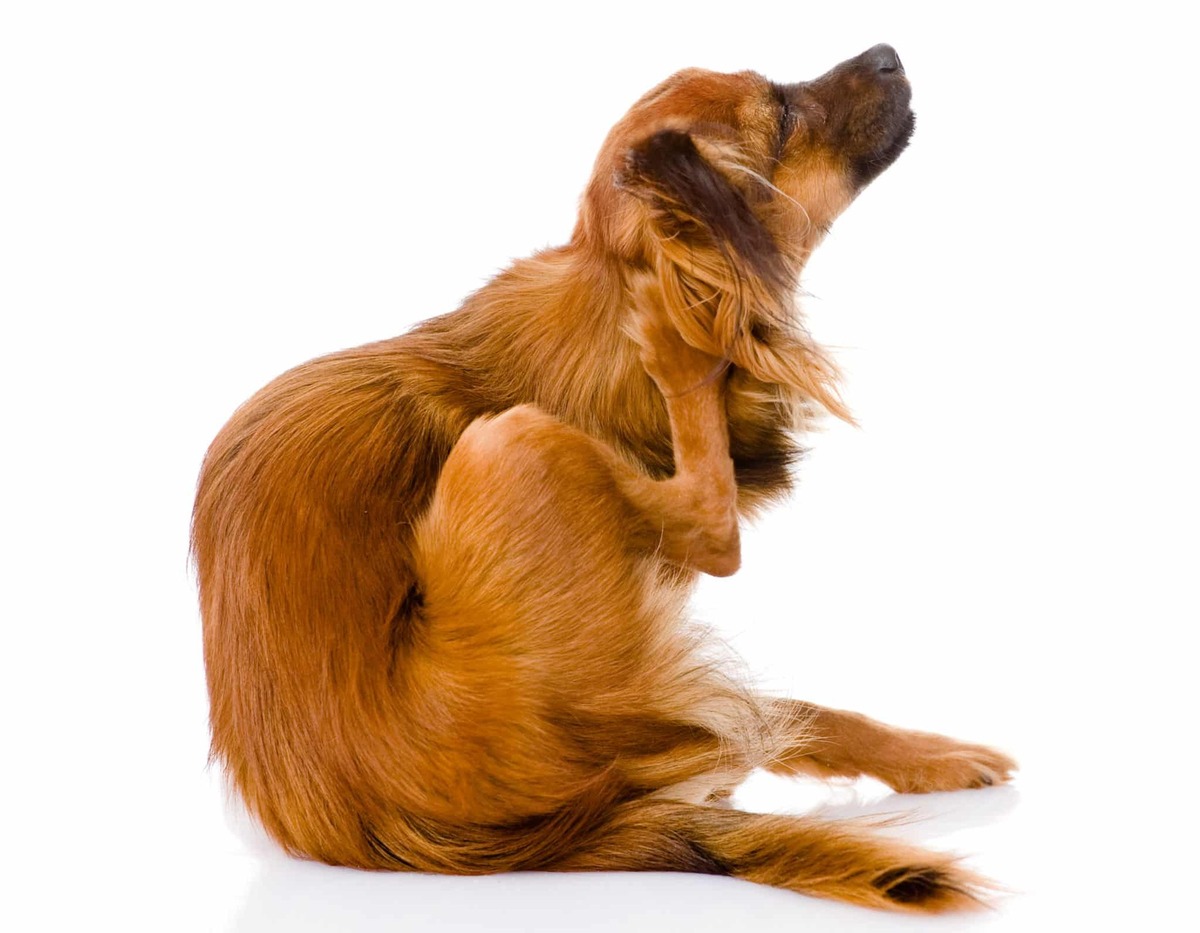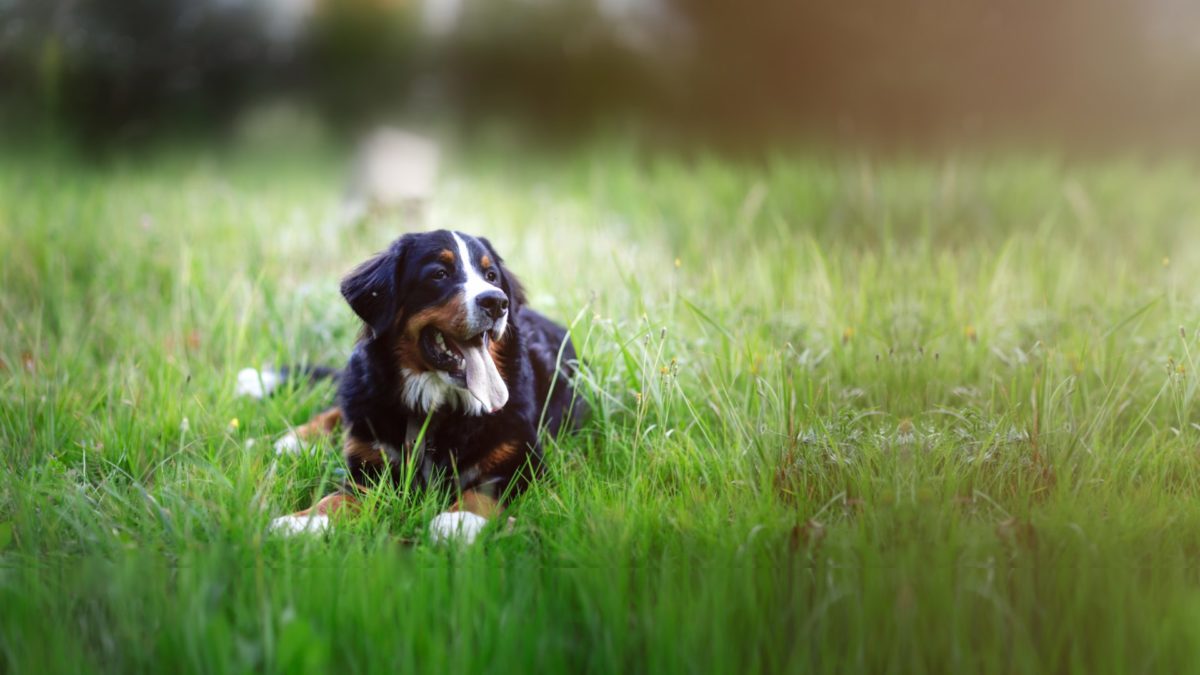Home>Health & Wellness>Common Health Issues>How To Comb Out Fleas In A Dog
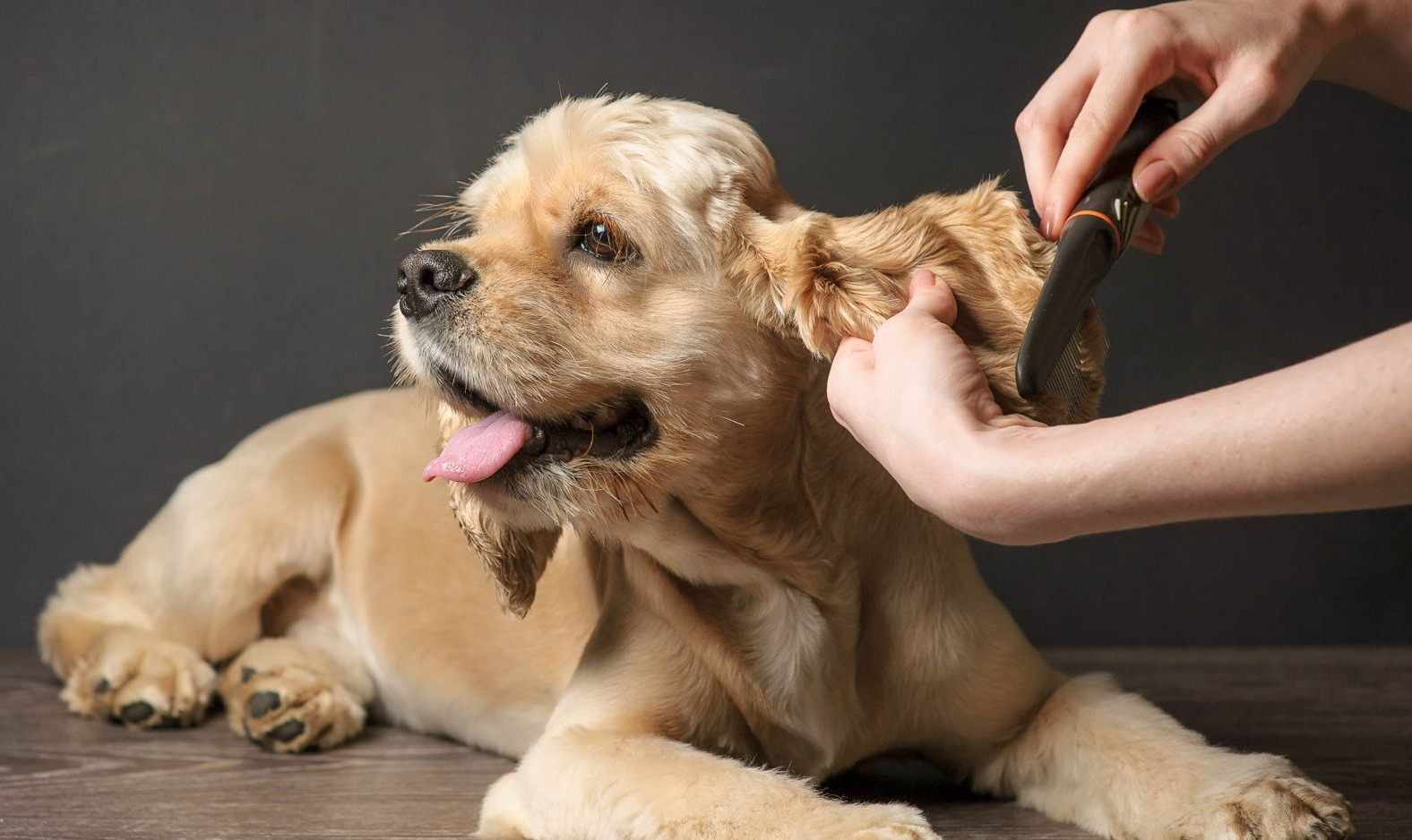

Common Health Issues
How To Comb Out Fleas In A Dog
Published: February 15, 2024
Learn how to effectively comb out fleas in dogs and prevent common health issues with our expert tips and advice. Keep your furry friend healthy and happy!
(Many of the links in this article redirect to a specific reviewed product. Your purchase of these products through affiliate links helps to generate commission for Pawsomeoldies.com, at no extra cost. Learn more)
Table of Contents
Introduction
Fleas are a common nuisance for dogs and their owners. These tiny, agile parasites can cause discomfort and irritation to our furry friends, leading to incessant scratching, skin irritation, and even allergic reactions. As responsible pet owners, it is crucial to address flea infestations promptly to alleviate our dogs' discomfort and prevent the spread of these pesky pests.
In this comprehensive guide, we will delve into the art of combing out fleas from your dog's coat. This simple yet effective method can help rid your canine companion of fleas without resorting to harsh chemicals or medications. By understanding the flea problem, acquiring the necessary tools, and following a step-by-step combing process, you can effectively tackle this common health issue and provide relief to your beloved pet.
Fleas are not only a nuisance to dogs but can also pose health risks. These blood-sucking parasites can transmit diseases and cause anemia, especially in young or small dogs. Therefore, taking proactive measures to combat fleas is essential for maintaining your dog's overall well-being.
By learning how to effectively comb out fleas, you can take a proactive approach to your dog's health and well-being. This guide will equip you with the knowledge and skills to tackle flea infestations head-on, ensuring a comfortable and flea-free environment for your furry companion. Let's embark on this journey to empower ourselves with the tools and techniques needed to combat fleas and provide our dogs with the care and attention they deserve.
Read more: How To Get Sand Out Of Dog’s Eye
Understanding the flea problem in dogs
Fleas are persistent and troublesome parasites that can wreak havoc on dogs and their owners. These minuscule insects thrive by feeding on the blood of their hosts, causing discomfort and potential health issues. Understanding the flea problem is crucial for effectively addressing and preventing infestations in dogs.
Fleas are not just a seasonal annoyance; they can be a year-round problem in many regions. These tiny pests can infest your dog's fur, bedding, and living spaces, making it challenging to eradicate them completely. Once a flea finds its way onto your dog, it can quickly reproduce, leading to a full-blown infestation if left unchecked.
The presence of fleas can cause a range of issues for dogs, including incessant itching, skin irritation, hair loss, and allergic reactions. In severe cases, flea infestations can lead to anemia, especially in young or small dogs. Additionally, fleas can transmit diseases and parasites, further compromising the dog's health.
One of the challenges with fleas is their agility and ability to evade detection. These tiny insects can move swiftly through a dog's fur, making them difficult to spot with the naked eye. As a result, it's essential to be proactive in identifying and addressing flea infestations before they escalate.
Furthermore, fleas can also infest the indoor environment, laying eggs in carpets, upholstery, and bedding. This means that even if your dog spends minimal time outdoors, they can still be at risk of flea infestations. Understanding the potential sources of fleas and their life cycle is crucial for effective prevention and control.
By gaining a comprehensive understanding of the flea problem in dogs, pet owners can take proactive measures to protect their canine companions. This includes regular grooming, environmental management, and the use of preventive measures such as flea collars or topical treatments. With the right knowledge and approach, it is possible to mitigate the impact of fleas and provide a comfortable, flea-free environment for dogs.
In the next sections, we will explore the tools needed for combing out fleas and provide a step-by-step guide to effectively addressing flea infestations in dogs. By equipping ourselves with the necessary knowledge and tools, we can empower pet owners to tackle the flea problem head-on and ensure the well-being of their beloved canine companions.
Tools needed for combing out fleas
To effectively comb out fleas from your dog's coat, you will need a few essential tools that facilitate the process and ensure thorough removal of these pesky parasites. These tools are readily available and play a crucial role in combating flea infestations without resorting to harsh chemicals or medications. Here are the essential tools needed for combing out fleas:
-
Flea Comb: A flea comb is a specialized fine-toothed comb designed to trap and remove fleas from your dog's coat. These combs are designed to catch fleas between their teeth, allowing for easy removal. When selecting a flea comb, opt for one with narrow teeth and a comfortable handle to facilitate the combing process.
-
Grooming Gloves: Grooming gloves with textured surfaces are highly effective in removing fleas and their eggs from your dog's fur. These gloves allow you to gently massage and pet your dog while simultaneously capturing fleas and debris. The textured surface helps dislodge fleas and ensures a thorough grooming experience.
-
Warm Soapy Water: A bowl of warm, soapy water serves as a temporary holding area for captured fleas during the combing process. This simple yet effective solution allows you to monitor and dispose of the trapped fleas, preventing them from escaping and re-infesting your dog or living spaces.
-
Treats or Distractions: While not a traditional tool, treats or distractions are invaluable for keeping your dog calm and cooperative during the combing process. By offering treats or engaging your dog with their favorite toy, you can create a positive grooming experience and minimize any discomfort or restlessness.
-
Well-Lit Area: Adequate lighting is essential for effectively spotting and capturing fleas during the combing process. Ensure that you have access to a well-lit area, either natural or artificial, to facilitate thorough inspection and removal of fleas from your dog's coat.
By assembling these essential tools, you can create a conducive environment for combing out fleas from your dog's coat. These tools are designed to streamline the process and ensure that you can effectively capture and remove fleas without causing distress to your dog. With the right tools at your disposal, you can embark on the combing process with confidence, knowing that you are equipped to address flea infestations in a gentle and effective manner.
In the following section, we will delve into a step-by-step guide to combing out fleas, providing detailed insights into the process and best practices for achieving optimal results.
Step-by-step guide to combing out fleas
Combing out fleas from your dog's coat is a meticulous process that requires patience and attention to detail. By following a step-by-step approach, you can effectively remove fleas and provide relief to your canine companion. Here's a comprehensive guide to combing out fleas from your dog:
-
Preparation: Begin by preparing the necessary tools, including a flea comb, grooming gloves, warm soapy water, treats or distractions, and ensuring a well-lit area for the combing process.
-
Comfort your dog: Before commencing the combing process, ensure that your dog is calm and comfortable. Offer treats or engage them with their favorite toy to create a positive grooming experience.
-
Start with the head: Using the flea comb, gently comb through your dog's head, starting from the ears and moving towards the muzzle. Pay close attention to areas behind the ears and along the jawline, as fleas tend to congregate in these warm, hidden spots.
-
Focus on the neck and chest: Proceed to comb through the neck and chest area, ensuring thorough coverage and capturing any fleas or debris. The textured surface of grooming gloves can be particularly effective in dislodging fleas from these areas.
-
Work through the body: Gradually work your way through the rest of your dog's body, combing through the fur in small sections. Take your time and ensure that you cover all areas, including the back, sides, and belly.
-
Inspect and capture fleas: As you comb through your dog's coat, periodically inspect the flea comb and grooming gloves for trapped fleas. Dip the comb or gloves into the warm soapy water to immobilize and capture the fleas, preventing them from escaping.
-
Repeat and focus on hotspots: Pay special attention to areas where fleas are commonly found, such as the base of the tail, armpits, and groin. These are hotspots for flea activity and require thorough combing to ensure complete removal.
-
Dispose of captured fleas: After each combing session, carefully dispose of the captured fleas from the warm soapy water. This prevents any potential re-infestation and ensures that the fleas are effectively removed from your dog's coat.
-
Post-combing care: Once the combing process is complete, offer praise and additional treats to reward your dog for their cooperation. Additionally, consider washing your dog's bedding and thoroughly cleaning their living spaces to prevent re-infestation.
By following this step-by-step guide, you can systematically comb out fleas from your dog's coat, providing relief and comfort to your furry friend. This gentle and non-invasive approach allows you to address flea infestations effectively while fostering a positive grooming experience for your dog.
Tips for preventing future flea infestations
Preventing future flea infestations is a crucial aspect of maintaining your dog's well-being and ensuring a comfortable living environment for both your pet and your family. By implementing proactive measures and incorporating preventive strategies, you can significantly reduce the risk of flea infestations and minimize the impact of these pesky parasites. Here are essential tips for preventing future flea infestations:
-
Regular Grooming: Establish a routine grooming schedule for your dog, including regular brushing and combing. This not only helps in maintaining your dog's coat but also allows you to detect and address any signs of flea activity at an early stage. Thorough grooming sessions provide an opportunity to inspect your dog's fur for fleas, eggs, or debris, enabling prompt action if any infestation is detected.
-
Environmental Management: Keep your living spaces clean and well-maintained to minimize the risk of flea infestations. Vacuuming carpets, upholstery, and pet bedding regularly can help remove flea eggs and larvae, reducing the likelihood of infestations. Additionally, washing your dog's bedding and frequently cleaning areas where your dog spends time indoors can contribute to a flea-free environment.
-
Outdoor Maintenance: If your dog spends time outdoors, particularly in grassy or wooded areas, consider implementing preventive measures such as flea collars or topical treatments. These products can provide a layer of protection against fleas and other parasites, reducing the risk of infestations. Additionally, regularly mowing the lawn and maintaining outdoor spaces can help minimize flea habitats.
-
Consultation with a Veterinarian: Regular check-ups with a veterinarian are essential for maintaining your dog's overall health and well-being. During these visits, discuss preventive measures for fleas and seek professional advice on suitable flea control products. Veterinarians can recommend safe and effective flea prevention options tailored to your dog's specific needs.
-
Use of Flea Preventatives: Explore the use of flea preventatives such as oral medications, spot-on treatments, or flea collars. These products are designed to repel and kill fleas, providing long-lasting protection for your dog. When selecting flea preventatives, consider factors such as your dog's age, size, and any existing health conditions to ensure the most suitable and safe option.
-
Regular Inspections: Routinely inspect your dog for signs of flea activity, including excessive scratching, redness, or small black specks in the fur (flea dirt). Early detection of fleas allows for prompt intervention, preventing infestations from taking hold and causing discomfort to your dog.
-
Education and Awareness: Stay informed about flea control best practices and the latest preventive measures. By staying educated about flea behavior, life cycles, and effective control methods, you can make informed decisions and take proactive steps to prevent future infestations.
By incorporating these tips into your dog care routine, you can create a proactive and effective approach to preventing future flea infestations. These preventive measures not only safeguard your dog's well-being but also contribute to a harmonious and flea-free living environment for both your pet and your family.
Read more: How To Get A Worm Out Of A Dog’s Eye
Conclusion
In conclusion, the process of combing out fleas from your dog's coat is a fundamental aspect of responsible pet ownership. By understanding the flea problem, acquiring the necessary tools, and following a step-by-step combing process, pet owners can effectively address and prevent flea infestations without resorting to harsh chemicals or medications.
The act of combing out fleas goes beyond the physical removal of parasites; it fosters a deeper bond between pet owners and their dogs. The gentle and meticulous process of combing not only provides relief to the dog but also creates a nurturing and attentive environment. It allows pet owners to engage in hands-on care, demonstrating their commitment to the well-being of their furry companions.
Furthermore, the preventive measures and tips shared in this guide serve as a proactive approach to maintaining a flea-free environment. By incorporating regular grooming, environmental management, and the use of preventive products, pet owners can significantly reduce the risk of flea infestations and safeguard their dog's health and comfort.
Ultimately, the journey of combing out fleas and preventing future infestations is a testament to the dedication and care that pet owners extend to their dogs. It is a reflection of the unspoken bond and mutual trust between humans and their canine companions. Through education, awareness, and proactive measures, pet owners can create a harmonious and flea-free living environment, ensuring that their dogs thrive in a comfortable and nurturing space.
As we conclude this guide, it is essential to emphasize the significance of regular monitoring and preventive care in maintaining a healthy and flea-free lifestyle for dogs. By embracing the knowledge and techniques shared in this guide, pet owners can embark on a journey of proactive flea control, providing their dogs with the care, attention, and comfort they deserve.
In essence, the process of combing out fleas is not just a practical task; it is a demonstration of compassion, responsibility, and unwavering dedication to the well-being of our beloved canine companions.
